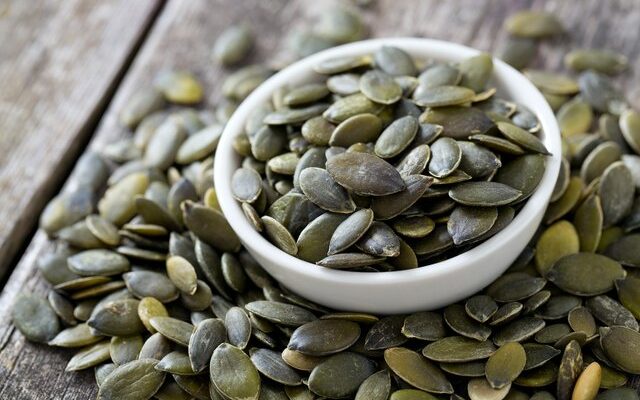When it comes to snacking, pumpkin seeds often fly under the radar. These tiny powerhouses are not only delicious but also packed with nutrients. Whether you’re a fan of them shelled or prefer eating them whole, there’s no denying their benefits.
Nutritional benefits of pumpkin seed shells
Whole pumpkin seeds, encased in their crunchy shells, offer more than just added texture. One significant advantage is their higher fiber content. A single ounce of whole seeds provides about 5 grams of fiber, compared to only 2 grams from shelled seeds. This boost in fiber is great for digestion and heart health as it helps regulate cholesterol and blood pressure levels.
Apart from fiber, these little seeds are rich in essential minerals such as zinc, magnesium, copper, and iron. These minerals play crucial roles in various bodily functions, including oxygen transport and maintaining healthy blood.
How fiber aids digestion and heart health
Fiber is an essential nutrient that promotes optimal digestion by feeding beneficial bacteria in the gut. This, in turn, supports intestinal health and can help prevent constipation. Additionally, a high-fiber diet may lower the risk of heart disease. The fibers’ ability to reduce bad cholesterol levels contributes significantly to cardiovascular wellness.
Why mineral content matters
Minerals like zinc and magnesium are vital for immune function, muscle health, and enzymatic reactions in the body. Meanwhile, iron is critical for producing hemoglobin, the protein in red blood cells responsible for carrying oxygen throughout the body. Ensuring you get enough iron helps avoid fatigue and other related issues.
Considerations for those with digestive conditions
Despite their benefits, whole pumpkin seeds may not be suitable for everyone. Individuals with specific digestive conditions, such as Crohn’s disease or ulcerative colitis, should exercise caution. The high fiber content in these seeds can exacerbate symptoms like inflammation, pain, and diarrhea.
Even those without diagnosed digestive issues need to consume these seeds mindfully. Overeating can lead to discomfort due to their small size and high fiber density. Drinking plenty of water while consuming them can aid in mitigating any potential stomach troubles.
Managing portion sizes
It’s easy to overindulge in these tasty snacks, especially given their small size. Paying attention to portion sizes can help ensure you reap all the nutritional benefits without any negative side effects. Typically, moderation is key for incorporating high-fiber foods into your diet.
The importance of hydration
Hydration plays a significant role when consuming fiber-rich foods. Water helps move fiber through your digestive tract efficiently, preventing issues like bloating and constipation. So, make sure to have a glass of water handy the next time you munch on some pumpkin seeds.
Preparing your pumpkin seeds at home
If you’ve ever carved a pumpkin, you know it’s brimming with seeds. Preparing these at home is straightforward and rewarding. First, cut off the top of the pumpkin and scoop out the seeds along with the flesh. Rinse the seeds under cold water, gently removing any lingering pumpkin bits, then pat them dry with a paper towel.
While raw pumpkin seeds are perfectly edible, roasting them brings out a delightful crunch and flavor. Toss them in oil or melted butter along with salt, pepper, and your favorite seasonings. Spread them evenly on a baking sheet and pop them into the oven at 300°F. After 30-40 minutes, they’ll be golden brown and ready to enjoy.
Step-by-step roasting guide
- Preheat your oven to 300°F (150°C).
- Slice open your pumpkin and scoop out the seeds using a spoon.
- Place the seeds in a colander and rinse thoroughly under cold water.
- Pat the seeds dry with a paper towel.
- Toss the seeds with oil or melted butter and add salt, pepper, or any desired seasoning.
- Spread the seeds evenly on a baking sheet.
- Bake for 30-40 minutes, stirring occasionally until golden brown and crunchy.
Seasoning options to try
Spicing up your pumpkin seeds can elevate their taste even further. Here are a few ideas:
- Classic Salt and Pepper: Simple yet satisfying.
- Cinnamon Sugar: Perfect for a sweet treat.
- Cajun Spice: For those who like a bit of heat.
- Garlic Parmesan: A savory delight.
Exploring different ways to enjoy pumpkin seeds can introduce you to a variety of flavors and textures. With so many benefits packed into these small seeds, both shelled and unshelled versions deserve a place in your pantry. Remember, whether you’re cracking into a batch of seeds fresh from a pumpkin or nibbling on store-bought pepitas, each bite brings a host of nutritional perks.





Comments